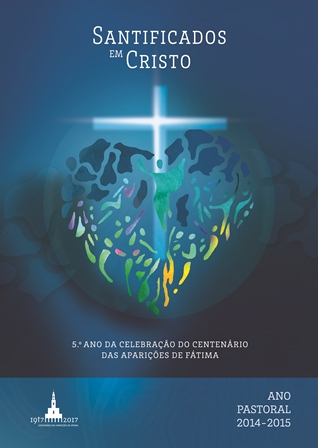29 november, 2014

The 5th cycle of the thematic itinerary, that guides the life of the Sanctuary over seven years until 2017, takes as its starting point the apparition of Our Lady in August 1917. The option to set about, in each cycle of this septenary, reflecting on an apparition allows us to identify the fundamental ideas of the Fatima message and deepen its most significant topics, by fasting together in an organic and coherent way. In the apparition of August, we recognize and assert the final exhortation of Our Lady as the most important words: "Pray, pray much and make sacrifices for sinners, for many souls go to hell because they have no one to sacrifice and pray for them." In this exhortation we perceive its most prominent theological core: the communion of saints. In the shortest Creed, the so-called Apostles’ Creed [or Symbol of the Apostles], we assert that we believe in the communion of saints. When the Church speaks of the Communion of Saints, she makes allusion to the union or communion of all believers in Christ, "so that what each one does or suffers in and for Christ bears fruit for all" (Catechism of the Catholic Church, n. 961). Comparing the Church to a body, St. Paul said: "If one member suffers, all suffer together; if one member is honored, all rejoice together. Now you are the body of Christ and individually members of it" (1 Cor 12: 26-27). And the Catechism of the Catholic Church explains that “in this solidarity with all men, living or dead, which is founded on the communion of saints, the least of our acts done in charity redounds to the profit of all. Every sin harms this communion.” (n. 953). Sister Lucia, meditating on this article of the Creed, calls back the body image used by the Apostle: «As St. Paul says (Col 1, 24), we must complete in ourselves what is lacking in Christ´s passion, because we are members of his mystical body. Now, if one member of the body suffers, all the other members suffer with it, and if one member is sacrificed, all other members participate in this sacrifice; if a member is sick, and the disease is serious, though located only in it, the whole body suffers and dies. The same holds true for the spiritual life: all of us are sick, all of us have the duty, in union with the innocent victim who is Christ, to sacrifice ourselves in reparation for our sins and those of our brethren, because we are all members of the same and only mystical body of Christ.» (Apelos da Mensagem de Fátima, Carmelo de Coimbra – Secretariado dos Pastorinhos, Fátima 2000, p. 89) Thus, the pastoral year 2014-2015 at the Fatima Shrine will have, as its main topic, “Sanctified in Christ”; at its basis, and as theological core, such theme reminds us the holiness of God, in which He makes us participate. Therefore, it aims to highlight the Church as communion of saints as catechetical element: holiness, as life of communion with God and in accordance with His will, is the vocation of every Christian. The attitude of faith, linked to this theme, is prayer: “Prayer, which opens to the experience of God´s love, also introduces into the communion of saints” (E. Bueno de la Fuente, A Mensagem de Fátima. A misericórdia de Deus: o triunfo do amor nos dramas da história, Santuário de Fátima, 2014, p. 228). The attitude of faith also finds its starting point in the words of Our Lady, in this apparition: “Pray, pray very much”. This call brings back in thought the Angel’s words in his second apparition, in previous year: “What are you doing? Pray! Pray very much!” The insistent call to prayer is one of the most characteristic features of the Fatima message: it is the first request of Our Lady to the Little Shepherds, and the petition more reiterated in all of the apparitions. Prayer is at the core of the Fatima message as an invitation and allurement to a strong experience of God. Fr. Carlos Cabecinhas |